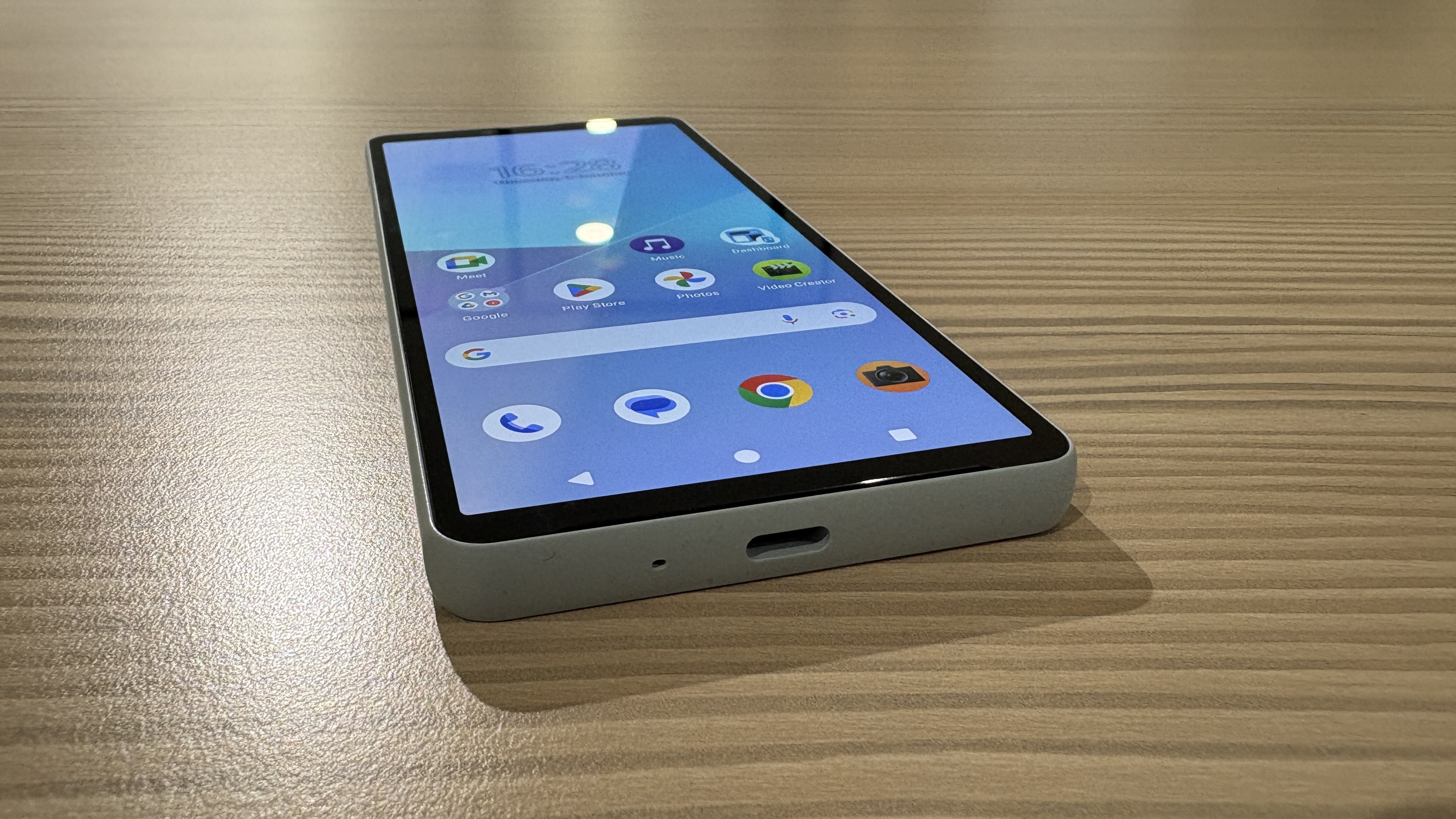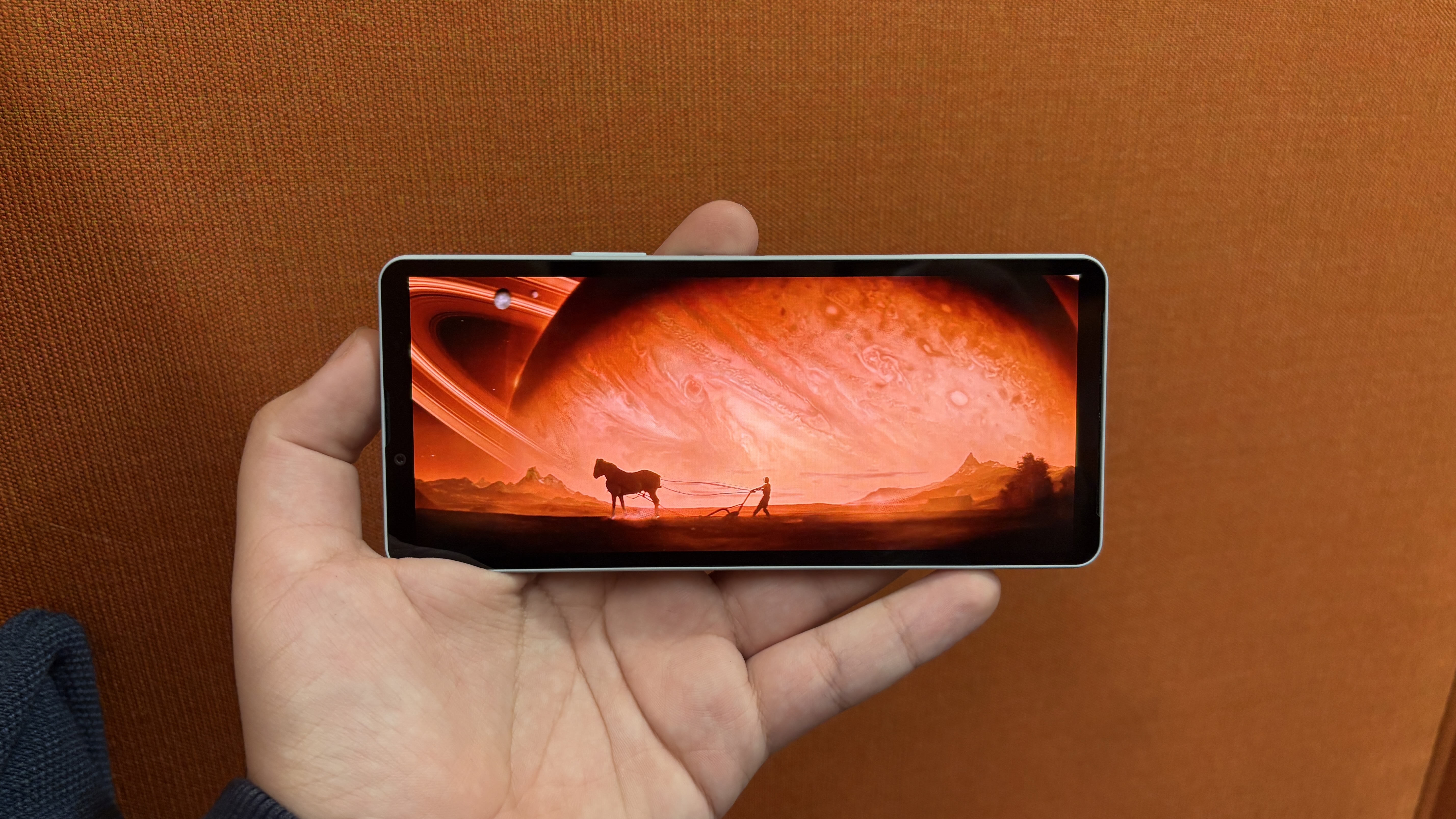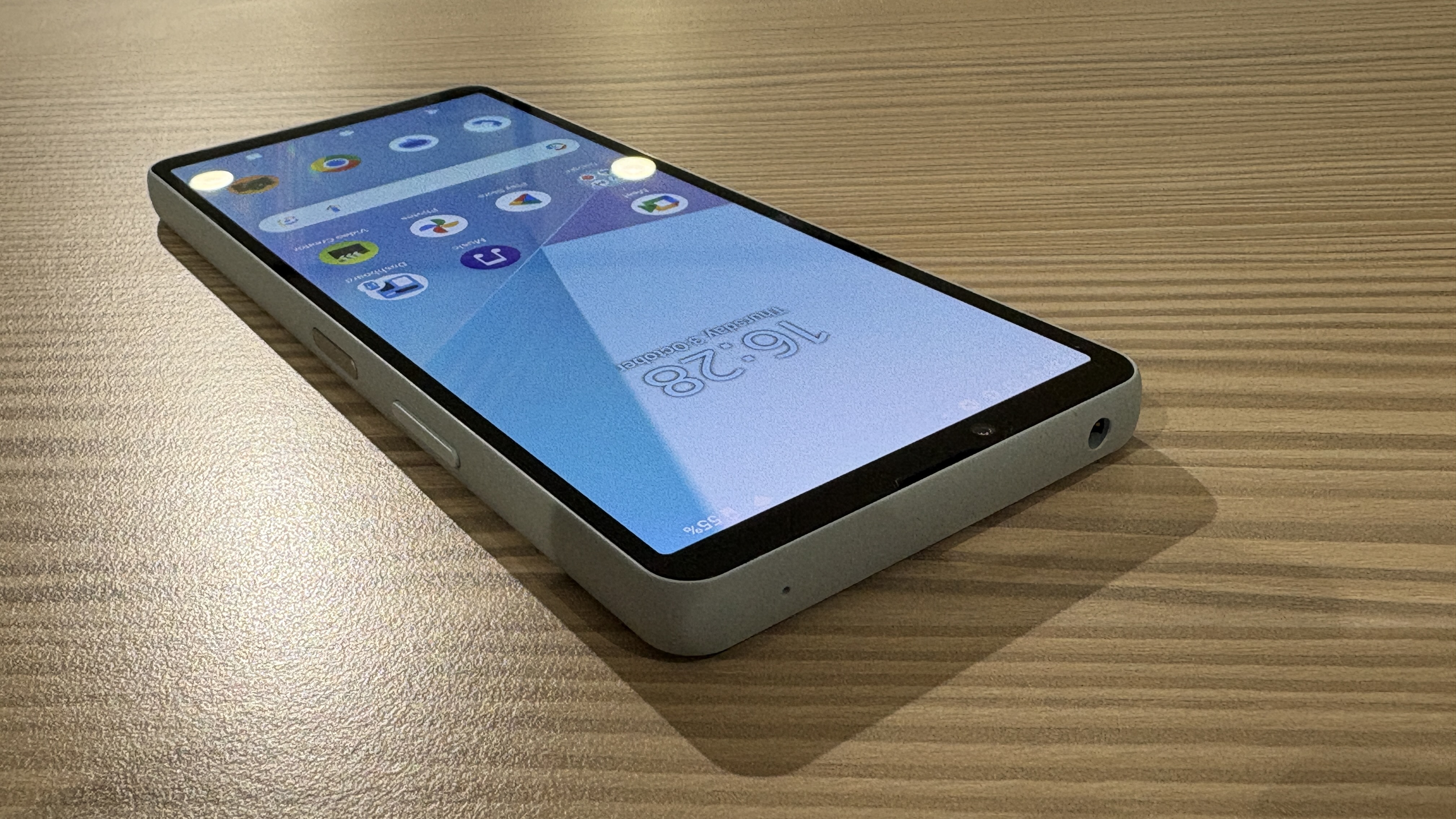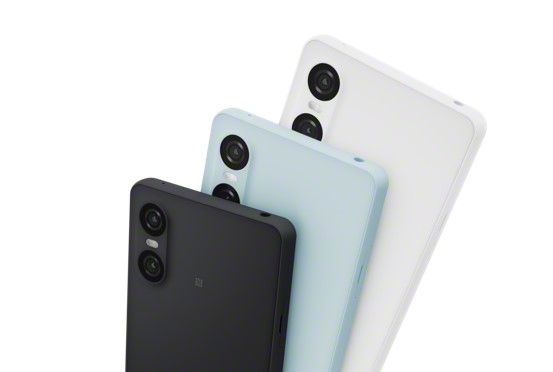What Hi-Fi? Verdict
The Sony Xperia 10 VI is yet another impressive budget handset that excels for movies and music
Pros
- +
21:9 aspect ratio for movies
- +
Detailed and three-dimensional picture
- +
Insightful and engaging headphone audio
Cons
- -
Handset vibrates when using speakers
- -
Some loss of dark detail
Why you can trust What Hi-Fi?
Sony’s smartphones tend to score well on our testing metrics, as they’re practically the only handsets on the market that are designed for content consumption first and foremost. The 21:9 OLED displays, front-firing stereo speakers and old-school headphone jack are features we wish every phone had, but even Sony now appears to be softening in its resolve.
After announcing that the flagship Xperia 1 VI would forgo the cinematic aspect ratio and drop to 1080p, we were immediately sent into a spiral. Thankfully, in the same breath, Sony announced that its entry-level Android smartphone, the Xperia 10 VI, would stick to the established formula, and that’s what we’re here to look at today.
Can Sony hit a hat-trick of affordable five-star handsets? Will this device continue the streak of Award-winning budget brilliance that is the Xperia 10 series?
Price
The Sony Xperia 10 VI retails for £349 on paper, which is already a steal in the realm of smartphones. Better yet, we’re already seeing it available for just £299 at a wide range of retailers, which is a frankly bonkers bargain at a time where thousand-pound handsets are the norm for many. Unfortunately, Sony has once again opted not to launch this device in the US or Australia, where it would hypothetically cost around $465 and AU$670 respectively.
Competition at this price is very slim, aside from perhaps the Nothing Phone (1) (£399 / AU$749) and Google Pixel 7a (which now sells for £349 / $310 / AU$549 after being replaced by the Pixel 8a). Comparing the Xperia 10 VI to the current batch of Apple iPhones and Samsung Galaxy S smartphones is futile, as we’re talking about doubling or tripling the price depending on which model you opt for.
Build

Sony has made strides in the design and build quality of its budget handset this year. The latest Xperia 10 is a step up over last year’s Mark V device, with a more rigid and premium-feeling chassis. It’s still all plastic (aside from the Corning Gorilla Glass Victus display), but this year’s device features a smoother back panel that incorporates the camera lenses more stylishly. It’s also a touch heavier this year, weighing in at 164g compared to 159g for the 10 V. While a heavier handset might sound like a step in the wrong direction, in reality, the new Xperia 10 feels more solid as a result.

Screen size 6.1 inches
Screen type OLED
Screen resolution 1080 x 2520 (449 ppi)
Finishes x 4 (Black, White, Blue)
Operating system Android 14
Storage 128GB
RAM 8GB
While the flagship Xperia 1 VI has lost its taller and thinner aspect ratio, Sony has curiously opted to keep it on the Xperia 10 VI. We’re not complaining, as it is a feature we’ve harped on about in practically all of our previous Xperia phone reviews, but it does seem like an odd choice to split the range in this way. While we appreciate the taller and thinner aspect ratio for watching movies, we have to admit that it comes at the expense of usability at times; for instance, not all apps play nicely with the ratio and people with smaller hands might find reaching the top of the screen tricky when using the device one-handed.
Overall, the Xperia 10 VI looks and feels more premium than its predecessor, and the new trio of available finishes – black, white and blue – all look fairly slick. Our review unit is in the blue hue, and we think the icy pastel finish suits the device perfectly.
That being said, the Xperia 10 VI is plagued with a similar issue to its predecessor. We don’t usually complain about this sort of thing on smartphones, but the haptic feedback on the Xperia 10 VI is so bad that we opt to turn it off in the settings menu. Every tap of the keyboard elicits a vibration that rattles the entire chassis of the device, creating an unpleasant buzzing noise. Cranking up the volume of the built-in speakers also results in a fair bit of chassis vibration, although we feel as though that aspect has been slightly reduced compared to the 10 V.
Features

Compared with the Xperia 1 VI and 5 V, the Xperia 10 (understandably) has a cut-down list of features. However, this entry-level device doesn’t appear too distant from its relatives on paper. It boasts a 6.1-inch OLED display with a resolution of 1080 x 2520 and a pixel density of 449ppi, that’s an identical specification to the more expensive Xperia 5. That being said, the Xperia 10’s display is 60Hz instead of 120Hz, and while the device technically supports HDR, it’s not the HDR10 standard as seen on the Xperia 5.
The Xperia 10 VI is a step up over its predecessor where internal components are concerned too. While picture and sound performance on the outgoing Xperia 10 V is excellent, we found day-to-day usability took a hit due to the use of the middling Qualcomm Snapdragon 695 chipset, which was also featured on the 2022 model. Sony has implemented a more powerful Snapdragon 6 Gen 1 processor and 8GB of RAM (up from 6GB) this time around, and while it won’t outpace a Galaxy S24 Ultra or iPhone 15 Pro Max, it’s certainly less stuttery than its predecessor. It also features 128GB of internal storage as standard, though there is a slot for a micro SD card on the SIM tray, meaning you can load media onto the device or expand the storage as needed.
We’re also pleased to see that, despite this being an affordable device, it doesn’t sacrifice the latest software features seen on more premium handsets. It’s running Android 14 and will reportedly receive the next three major Android system updates at a minimum – meaning you’re getting a worthwhile, future-proofed investment even though this isn’t a flagship device. As part of Android 14, you get access to Google’s latest AI features, including the Magic Eraser photo editing tool and the Gemini assistant. The latter works flawlessly on this device. For example, we ask it to “suggest some meals to cook this week that take less than 30 minutes to prepare and are high in protein” and Gemini delivers a coherent meal plan complete with instructions.
You may notice that there are two lenses on the rear of the Xperia 10 VI, whereas the previous iteration featured three. Sony has dropped the 8MP telephoto lens from last year’s model while retaining the 48MP main shooter and 8MP ultrawide lens. Honestly, this is no great loss as the entry-level Sony handsets have never really wowed us when it comes to camera performance. The Mark VI is unfortunately no different, as it produces images that are fairly noisy and lack much in the way of detail. It gets the job done for quick snaps here and there, but if you’re serious about smartphone photography, this phone will not satisfy your needs.
Sony is renowned for offering the most extensive smartphone audio features on the market, and it remains one of the few manufacturers to keep the 3.5mm headphone jack. We’re always happy to see the headphone jack, but if you prefer wireless audio you can take advantage of Bluetooth 5.2 in the A2DP, LE, aptX HD and aptX Adaptive codecs. If you’d rather play audio directly from the phone with no cans or buds attached, the front-firing stereo speakers will appeal.
Picture

Sony’s strategy of cutting down on premium build materials and camera performance, while retaining picture quality in order to reach a more affordable price point, has always resonated with us. This is the third generation that we’ve reviewed with this formula, and we’re pleased to report that picture performance is as strong as ever.
We’ve loaded Netflix and Amazon Prime Video onto the phone to watch a range of our reference movies, such as Top Gun: Maverick and Blade Runner: 2049. Put simply, the Xperia exceeds its diminutive price tag when it comes to picture performance, meaning we echo our sentiment from the Xperia 1 V; this is once again the “most cinematic phone we’ve seen for the money”.
The opening sequence of Blade Runner is delivered with well-defined outlines and plenty of detailed texture in clothing, skin and the environment alike. While the display can appear to lean cooler than we prefer, the colours overall remain balanced and well-judged, leading to a pleasingly natural-looking image.
What’s most striking (but perhaps least surprising if you’re familiar with Sony smartphones) is how much three-dimensional depth there is to the image. The dystopian California stretches far into the distance during the opening shots, and Sapper Morton’s gloved hand looks solid and impactful as it arises from a grimy tank holding squirming maggot-like creatures.
As Officer K enters the farmhouse, we find that there is some loss of dark detail in the very blackest part of the image, but the areas bathed in murky white light from the windows have a natural-looking illumination without appearing over-brightened. While the edges of the piano and some detail within the chairs in the scene get lost, it’s forgivable considering the price of this device, and it doesn’t distract too greatly from the overall picture quality.
Switching to Top Gun: Maverick, the sequence introducing the titular character echoes much of what we saw with Blade Runner 2049. There is a great sense of three-dimensionality and edges are well defined. We also get to see motion in action and are pleased to report that there is no observable judder to be seen as Maverick tears down the road on his Kawasaki motorbike. Furthermore, skin tones look accurate, with a solid balance between looking lively without being overtly orange or red.
Sound

The Xperia 10 VI continues the budget series’ trend of formidable audio performance at a reasonable price. We plug a pair of over-ear headphones directly into the 3.5mm headphone jack and load up Tidal to test performance and, in all honesty, it's very reminiscent of its Award-winning predecessor.
Playing DARE by Gorillaz, we’re met with a snappy and rhythmic performance that captures the playful energy of the track. Switching to something a bit more melancholic and slower-paced, Taylor Swift’s The 1 sounds detailed, with the sort of low-level dynamic subtlety required to deliver Swift’s yearning lyrics with the necessary emotive qualities. The sound remains spacious, well organised and dynamic, making it difficult to pick holes in, especially considering the price.
The Xperia 10 VI’s speakers are also more than acceptable, and while they won’t knock your socks off, they’re perfectly usable for watching the occasional TV show without connecting headphones. The front-firing stereo pair returns, with a clear and decent sense of weight (as much as can be expected from an affordable smartphone). We find that they’re not particularly dynamic or full-bodied – and we implore you not to be that person who plays music on your phone’s loudspeaker – but the speakers are overall more than usable. Just be warned of the previously mentioned chassis vibration if you plan on using them at high volumes.
Verdict

Sony’s ability to deliver a phone this talented in the picture and sound department for this price should be studied by other manufacturers. We’ve seen phones that cost double or even triple the price of the Xperia 10 VI unable to deliver a performance like this; thus proving that you don’t need to spend ludicrous amounts of money if you want a handset that doubles as an impressive portable music and movie player.
Review published: October 2024. Review updated: November 2024.
SCORES
- Picture 5
- Sound 5
- Features 4
MORE:
Read our review of the Google Pixel 7a
Also consider the Nothing Phone (1)
What Hi-Fi?, founded in 1976, is the world's leading independent guide to buying and owning hi-fi and home entertainment products. Our comprehensive tests help you buy the very best for your money, with our advice sections giving you step-by-step information on how to get even more from your music and movies. Everything is tested by our dedicated team of in-house reviewers in our custom-built test rooms in London, Reading and Bath. Our coveted five-star rating and Awards are recognised all over the world as the ultimate seal of approval, so you can buy with absolute confidence.



